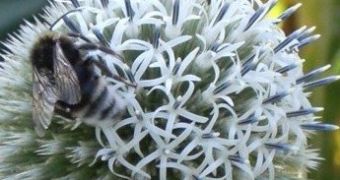A recent study proved that trained honeybees can count up to four landmarks in order to get to the food they were provided. Adding to that number caused them to lose count and reach different destinations.
It has been long known that bees (Apis Mellifera) are capable of remarkable things, perhaps more than other insects with a complex social life. They show signs of symmetry understanding, and they can use symbolic language (like their waggle dance) in order to "explain" the distance to and location of the pollen sources. The latest tests suggest that they are also able to communicate with other species, as well as to count, although not too far.
Together with their teams, researchers Songkun Su of Zhejiang University in Hangzhou, China and Shaowu Zhang of the Australian National University in Canberra succeeded in tempering the bees' natural impulse of slaying the intruders and for the first time managed to create a mixed colony of honeybees, which was comprised of European bees (Apis Melifera), as well as of their Asian counterparts, (Apis Cerana). When a worker bee finds food, it returns to the hive and performs a dance that shows the hivemates the direction and distance to the food. The dance, which takes place on a honeycomb wall, consists of a series of shimmy moves performed while the bee walks around in a pattern resembling the shape of an 8.
The dance is not completely understood by scientists, but it is believed that the wiggles form an angle in report to an imaginary perpendicular line which points the direction to the bees' destination with respect to the sun. As in, if a honeybee waggles towards 3 o'clock, this means that a food source has been located 90 degrees to the right of the Sun. Of course, not all bee species dance the same way, just like not all people speak the same language. Remarkably, though, Apis Cerana overcame the obstacle of language differences, deciphered the European bee's message and got to the food source.
Marie Dacke and Mandyam V. Srinivasan, also from the Australian National University, trained specimens of Apis Melifera in order to fly by a certain number of colored stripes drawn in a tunnel in order to get to food that had been placed by another stripe. When the food reward was removed, the bees still stopped by the same stripe. Subsequently, the researchers altered the space between the colored stripes and later on they even replaced the stripes with new markers. Still, the insects passed by the same number of unfamiliar markers to get to their reward, which proved that they were able to count up to small numbers. This even challenges Descartes' idea to a certain degree, by demonstrating that bees are able to count abstractly, independent of the objects involved.

 14 DAY TRIAL //
14 DAY TRIAL //